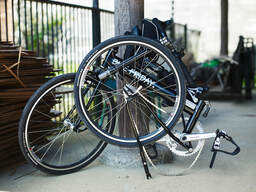‘The quick brown fox’ – Why I’m glad I learned to type
—
by


—
by
What’s the most useful thing you learned at school? For me, touch typing would be fairly high on the list. As a youngster, I’d always had a fascination for typing. We had a portable typewriter at home and I loved…

—
by
After almost three years of staying relatively close to home (as a result of the pandemic, plus a generally cautious attitude), I decided that 2022 was the year to spread my wings and embark on some foreign travel once more.…

—
by
Some editors and proofreaders complain that their everyday lives outside work are ruined by their professional eye for detail. They can no longer peruse a restaurant menu without noticing a spelling error. Relaxing with a novel is fraught with problems.…

—
by
Editors know a thing or two about style. I’m not talking about the chunky cardigans, furry slippers and fingerless gloves that some of us put on when the weather turns cool. This is about an editor’s work. Here, style is…

—
by
I’ve been a big fan of Bradford Literature Festival for a number of years. It’s a bright spot in Bradford’s cultural calendar and I’ve written in the past about why I love it.In previous years I’ve usually attended a fair…

—
by
When you’re building a career as a freelance editor or proofreader, it’s good to seek advice, right? The trouble is that, as with many situations in life, there’s no single ‘right’ way of doing things.A while ago I read a…

—
by
Freelance editors and proofreaders: have you ever felt as though you’re ‘muddling through’ in your professional life? You’re not alone. The current situation has forced many of us to adjust our plans on a daily (hourly?) basis. But even without…

—
by
Many of us have been terribly disappointed over recent months when the inevitable has happened – an in-person event (whether that’s a summer fête, rock concert, conference or networking session) has been cancelled because of the pandemic. The upside is…

—
by
As an editor, I spend my time making sure material is correct, consistent and clear for the intended audience. When I work with academic authors, it’s assumed that most readers will be those with an interest in – and background…

—
by
Three years ago I was inspired to write my very first blog post after a trip to Tarragona in Spain. I’d attended the annual gathering of the Mediterranean Editors and Translators (MET) – the so-called MET Meeting (METM, pronounced ‘met-um’)…